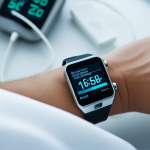Understanding Seasonal Affective Disorder and Its Impacts
Seasonal affective disorder (SAD) is a mood disorder characterized by recurrent depression that follows a seasonal pattern, typically emerging in fall or winter months. Its prevalence varies but affects a significant portion of the population, with symptoms often misunderstood or overlooked.
Common SAD symptoms include persistent low mood, lethargy, irritability, and changes in appetite or sleep patterns. Many individuals experience difficulty concentrating and a loss of interest in daily activities, which markedly impairs quality of life. These symptoms are rooted in the disorder’s influence on brain chemistry and circadian rhythm disruptions.
Also to see : Discovering the real benefits of blue light glasses: reducing digital eye strain for maximum comfort
The mental health effects of seasonal affective disorder extend beyond temporary sadness. SAD can exacerbate existing mood disorders or trigger new episodes, leading to increased risk of depression and anxiety. Daily functioning, work productivity, and social interactions are often negatively impacted, leaving individuals feeling isolated and overwhelmed.
Understanding these symptoms and impacts helps highlight the importance of timely recognition and intervention. Managing SAD involves an integrated approach that considers both physical and psychological health aspects to reduce the disorder’s burden effectively.
Also to discover : Boosting elderly vitality and wellness through the power of social ties
The Science Behind Light and Mood
Light plays a crucial role in regulating our mood and mental well-being. Both natural sunlight and artificial light influence the body’s internal clock, known as the circadian rhythm, which governs sleep-wake cycles and hormone release. Disruptions in circadian rhythm are strongly linked to the onset of seasonal affective disorder (SAD). When daylight decreases during fall and winter, reduced exposure to sunlight causes the brain to produce more melatonin, a hormone that promotes sleep, often resulting in increased fatigue and lowered mood.
Neurotransmitters such as serotonin, which regulate mood and emotional stability, are also affected by light exposure. Lower light levels can lead to decreased serotonin activity, contributing to SAD symptoms like low energy and depression. Understanding the biological connection between light and mood helps explain why people with SAD often experience worsening symptoms when sunlight is scarce.
Artificial light sources designed to mimic natural sunlight can help reset circadian rhythms and increase serotonin levels, offering a scientific basis for light therapy in SAD treatment. Recognizing the interplay of light, circadian rhythms, and neurotransmitter activity underscores the importance of adequate light exposure in managing mood effectively during darker months.
The Science Behind Light and Mood
Exploring how light influences our internal clocks and brain chemistry
Natural and artificial light and mood are closely intertwined through complex biological processes. Light exposure plays a pivotal role in regulating our circadian rhythm, the body’s internal clock that governs sleep-wake cycles and various physiological functions. In the shorter daylight months, reduced sunlight disrupts this rhythm, contributing to seasonal affective disorder (SAD).
At the heart of this disruption is melatonin, a hormone whose production is influenced by light. When daylight decreases, melatonin secretion may increase, causing lethargy and sleep disturbances commonly reported in SAD. Conversely, appropriate light exposure suppresses melatonin, promoting alertness and better mood.
Additionally, light affects neurotransmitters such as serotonin and dopamine, which modulate mood and emotional responses. Low sunlight can reduce the availability of these chemicals, exacerbating SAD symptoms and deepening depressive moods.
Understanding these biological mechanisms explains why light therapy is considered effective; it helps recalibrate the circadian rhythm and boosts neurotransmitter activity. This connection underscores the importance of managing light exposure to mitigate the mental health effects associated with seasonal changes.
Light Therapy: How It Works and Evidence of Effectiveness
Light therapy for SAD involves exposure to bright artificial light designed to mimic natural sunlight. This phototherapy helps regulate disrupted circadian rhythms by suppressing melatonin production and boosting serotonin levels, which are often altered in people experiencing seasonal affective disorder. The primary mechanism centers on recalibrating the internal body clock to improve mood and energy.
Clinical studies consistently demonstrate that light therapy reduces SAD symptoms such as lethargy, low mood, and sleep disturbances. Patients commonly receive treatment using a SAD lamp emitting 10,000 lux of cool-white fluorescent light for 20-30 minutes daily, preferably in the morning to align with natural circadian patterns. This regimen has been shown to deliver significant improvements within one to two weeks.
Medical professionals recommend light therapy as a frontline treatment for most individuals with seasonal affective disorder, given its safety and noninvasive nature. However, light therapy’s effectiveness depends on proper usage and timing. Research also suggests combining phototherapy with other treatments can enhance overall outcomes in managing mood disorders linked to seasonal changes.
Light Therapy: How It Works and Evidence of Effectiveness
Brightening the path to managing SAD symptoms
Light therapy for SAD operates by exposing individuals to bright, artificial light that mimics natural sunlight, usually through specialized lamps emitting around 10,000 lux. This exposure helps reset the circadian rhythm, counteracting the melatonin overproduction linked to seasonal affective disorder. By regulating sleep-wake cycles, light therapy reduces fatigue and low mood associated with SAD symptoms.
Clinical studies demonstrate that phototherapy significantly improves mood and energy levels in patients with SAD. For example, multiple randomized controlled trials report symptom relief within one to two weeks of consistent daily use, validating its role as a frontline treatment. These studies also show that treatment effectiveness depends on timing (typically morning sessions), duration (20 to 30 minutes daily), and light intensity.
Medical professionals recommend integrating light therapy with other interventions for optimal results, emphasizing device selection and user adherence. While not a cure, light therapy offers a non-invasive, evidence-based option that directly targets the biological underpinnings of seasonal affective disorder, providing tangible relief from its mental health challenges.
Choosing and Using Light Therapy Devices Safely
Selecting the right light therapy devices is essential for effective treatment of seasonal affective disorder (SAD). Not all SAD lamps are created equal; key features to prioritize include emitting 10,000 lux brightness, filtering ultraviolet (UV) rays to protect skin and eyes, and offering adjustable angles for comfortable use. These specifications ensure optimal exposure without harmful side effects.
Safety is paramount when using light therapy devices. It’s recommended to use the lamp daily for 20–30 minutes, preferably in the morning to align with the natural circadian rhythm. Users should maintain an appropriate distance—usually about 16 to 24 inches—from the lamp to avoid eye strain while maximizing benefits. Those with certain eye conditions or sensitivities should consult healthcare providers before starting therapy to prevent complications.
Different device types include traditional fluorescent lamps and newer LED models. Both can be effective, but LEDs tend to be more energy-efficient and generate less heat. Consistent, proper use of light therapy devices combined with adherence to safety guidelines significantly enhances treatment outcomes for individuals experiencing SAD symptoms.
Choosing and Using Light Therapy Devices Safely
A practical guide to selecting and operating SAD lamps
Selecting the right light therapy devices is crucial for effective treatment of seasonal affective disorder. Quality SAD lamps should emit 10,000 lux of cool-white fluorescent or LED light, mimicking natural sunlight’s intensity. Look for devices with a broad, even light distribution and UV filters to ensure safety. Portable models offer convenience but verify their output matches clinical standards.
Proper use guidelines significantly impact treatment success and safety. Position the device about 16 to 24 inches from your face, with eyes open but not staring directly into the light. Daily sessions usually last 20 to 30 minutes, often in the morning to align with your circadian rhythm. Avoid excessive use to reduce risks of side effects like eye strain or headaches.
Comparing products involves considering brightness, light spectrum, design, and ease of use. Some lamps include adjustable brightness settings and timers, enhancing personalized treatment control. Confirm the product complies with medical device standards for reassurance.
Regular cleaning and adherence to manufacturer instructions help maintain device safety and performance. If uncertain about device selection or usage, consulting a healthcare professional can optimize benefits and minimize risks in managing SAD symptoms effectively.
Understanding Seasonal Affective Disorder and Its Impacts
Exploring how SAD affects mood and daily functioning
Seasonal affective disorder (SAD) is a subtype of mood disorders distinguished by depressive episodes recurring seasonally, typically during fall and winter. This condition affects a notable percentage of individuals, varying across geographic regions based on daylight exposure.
SAD symptoms include persistent low mood, excessive fatigue, irritability, social withdrawal, and significant changes in appetite and sleep habits. These symptoms interfere with cognition and motivation, often causing difficulty in maintaining daily routines.
The mental health effects of seasonal affective disorder extend beyond transient sadness, potentially triggering or worsening other mood disorders like major depression or anxiety. This can lead to impaired work productivity, strained relationships, and social isolation. Emotional distress compounded by physical lethargy creates a cycle that is difficult to break without intervention.
Understanding the profound impact on quality of life underscores the necessity of recognizing SAD symptoms early. Addressing these symptoms effectively requires comprehensive approaches tailored to the individual’s experiences, emphasizing both emotional and functional restoration.
Understanding Seasonal Affective Disorder and Its Impacts
Exploring the depth of seasonal mood challenges
Seasonal affective disorder (SAD) is a specific type of mood disorder that follows a predictable seasonal pattern, typically starting in fall and continuing through winter. It affects millions worldwide, with prevalence depending on geographical location and daylight exposure. Recognizing its presence is critical, as SAD’s mental health effects extend beyond temporary mood dips.
Common SAD symptoms include persistent sadness, increased fatigue, social withdrawal, and changes in appetite or sleep. Difficulty concentrating and irritability frequently accompany these signs. Unlike general winter blues, SAD symptoms significantly impair daily functioning, leading to professional and personal challenges.
The mental health effects linked to seasonal affective disorder may also aggravate underlying conditions such as anxiety or depressive disorders. Sleep disturbances and low energy reduce quality of life and increase the risk of isolation. Understanding the patterns and broad impact of SAD highlights the necessity for early identification and comprehensive management to mitigate its burden on mental well-being.
Understanding Seasonal Affective Disorder and Its Impacts
Exploring how SAD affects mood and daily functioning
Seasonal affective disorder (SAD) is a recurring type of mood disorder emerging with seasonal changes, especially in fall and winter. It affects millions globally, with higher prevalence in regions experiencing reduced sunlight during these months.
The hallmark SAD symptoms include persistent sadness, fatigue, irritability, hypersomnia, increased appetite, and social withdrawal. Cognitive difficulties like trouble concentrating also commonly occur. These signs distinguish SAD from typical winter blues by their persistence and severity.
The mental health effects of SAD can be profound. Beyond mood alterations, SAD often disrupts daily functioning by impairing motivation, productivity, and social engagement. Untreated, it raises risks for concurrent or worsening mood disorders such as depression and anxiety, compounding emotional distress.
Understanding these impacts clarifies why prompt identification and treatment are vital. Early intervention can break the cycle of SAD symptoms and mitigate its heavy toll on quality of life, guiding affected individuals toward recovery and improved wellbeing.
Understanding Seasonal Affective Disorder and Its Impacts
Recognizing the far-reaching effects of SAD on well-being
Seasonal affective disorder (SAD) is a subtype of mood disorders marked by recurring episodes of depression linked to seasonal changes, especially in fall and winter. Its prevalence correlates with reduced daylight exposure, impacting millions worldwide.
Common SAD symptoms include persistent low mood, fatigue, social withdrawal, and disrupted sleep or appetite. These symptoms significantly impair concentration and energy, leading to difficulties in performing daily tasks. Individuals often struggle with motivation and may experience irritability or heightened anxiety.
The mental health effects of seasonal affective disorder extend beyond seasonal mood dips. SAD can trigger or worsen existing mood disorders, raising risks for major depression or anxiety disorders. The combined emotional and physical symptoms can disrupt work productivity and interpersonal relationships. This interference with normal functioning often causes feelings of isolation and decreased quality of life.
Understanding these impacts underscores the urgency of recognizing SAD symptoms early. Addressing both the emotional distress and functional impairments through timely intervention is essential to reducing the burden of seasonal affective disorder on individuals’ mental and social health.
Understanding Seasonal Affective Disorder and Its Impacts
Discovering how SAD affects mood and daily life
Seasonal affective disorder (SAD) is a subtype of mood disorders characterized by depressive episodes linked to seasonal changes, primarily occurring in fall and winter. Its prevalence is influenced by geographic latitude, with higher rates reported in areas with less sunlight during colder months.
Typical SAD symptoms include persistent low mood, increased fatigue, hypersomnia, social withdrawal, overeating, and difficulty concentrating. These symptoms are often more severe than common winter blues and can last for weeks or months. Importantly, they cause disruptions in daily functioning, such as reduced work performance and impaired social interactions.
The mental health effects associated with SAD extend beyond temporary mood changes. It frequently exacerbates existing mood disorders or triggers anxiety and depression episodes. The overlap of physical and emotional symptoms can create a cycle of isolation and decreased motivation, complicating recovery.
Recognizing these patterns supports early intervention. Tailored treatment can address SAD symptoms effectively, improving overall well-being and preventing deterioration of mental health during seasonal shifts.











